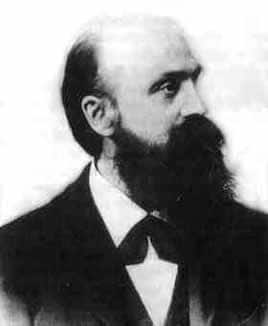
Wilhelm Killing
Wilhelm Karl Joseph Killing (May 10, 1847 to February 11, 1923) Killing was a German mathematician who made fundamental contributions to the study of Lie groups, Lie algebras, and non-Euclidean geometry. Lie groups and Lie algebras are mathematical structures that describe symmetries and have important applications in particle physics and relativity theory. For example, they are needed to describe the “gauge symmetries” of the Electromagnetic, Weak, and Strong forces, as well as angular momentum, the spins of particles, and the geometry of space-time. Lie groups and Lie algebras are named after Sophus Lie (pronounced LEE), who discovered them. But Killing discovered Lie algebras independently and did important work on their classification, introducing such basic concepts as the Cartan subalgebra, the Cartan matrix (both discovered by Killing before Cartan), and the “root system” of a Lie algebra. Killing’s work is also important in non-Euclidean geometry and the study of curved space-time. Many mathematical terms bear his name, including Killing vector, Killing spinor, Killing tensor, Killing equation, Killing horizon, Killing form, and the Killing-Hopf theorem. Killing taught for many years at the Jesuit seminary college Collegium Hosianum, until becoming a professor at the University of Münster in 1892. He and his wife were devout Catholics and became members of the Third Order of St. Francis in 1886.
Explore Other Scientists
It is our hope that this curated set of biographies will be useful to teachers, students, and the general public.